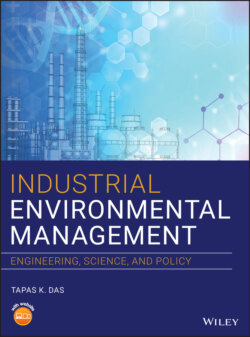Читать книгу Industrial Environmental Management - Tapas K. Das - Страница 35
1.10.6 Reinvent Regulatory Policies
ОглавлениеExperienced professionals are probably already aware of how government policies inadvertently inhibit creativity in reuse of wastes. These policies can also inhibit formation of effective industrial clusters. For example, breweries are regulated as an industry and the facilities are generally located in industrial areas. However, to make efficient use of their discharge water in aquaculture, breweries should be located in agricultural zones. Similarly, regulations aimed at providing a market for recycled newsprint need to be revised so that technologies that produce a better grade of paper can flourish – and allow more complete reuse of all the other by‐products associated with complete de‐inking.
Ironically, ZD goals are inhibited in the United States by regulations pursuant to the Resource Conservation and Recovery Act of 1976 (RCRA). Transferring “wastes” among the members of industrial clusters is often prohibited by RCRA because its regulatory net entangles all wastes, whether hazardous or not. Its broad scope has the unintended consequences of creating disincentives to invest in recovery technologies and blocking progress toward pollution prevention and recycling. RCRA waste classifications can put kinks in potential closed‐loop systems. Indeed, as Robert Herman (1989) put it, “the essence of the environmental crisis is not nearly so much bad actors as the whole, often contradictory structure of incentives in the economy.” Regulatory policies need to be reinvented to foster development of breakthrough conversion technologies and encourage cross‐sector markets for designer wastes.
